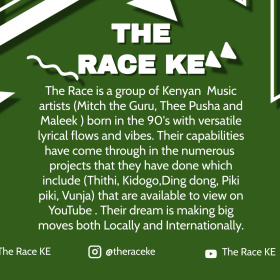The recording industry in Zambia
This article seeks to give an overview of the music recording industry in Zambia from its formative years to its current state.
 Zambian singer Maureen Lilanda at ZAMCOM Studios. Photo: UNICEF Zambia / Facebook
Zambian singer Maureen Lilanda at ZAMCOM Studios. Photo: UNICEF Zambia / Facebook
Background
The birth of the recording industry in Zambia can arguably be traced way back to the 1950s before there were any established recording studios in the country. Renowned South African-based ethnomusicologist Hugh Tracey would record local folk musicians on site using mobile recording equipment while doing fieldwork and data collection. Later, Tracey would work with veteran broadcaster and musician Alick Nkhata in the mobile recording of folk and indigenous Zambian music, mainly for research purposes.
The Northern Rhodesian Broadcasting Services, which later became the Zambia Broadcasting Services (ZBS), was the major recording facility in the country for a considerable time. As this was state-run and not solely for music recording purposes but also for broadcasting and information, most recordings done at ZBS were for the purpose of broadcasting on radio and much later on, television. Today it is known as the Zambia National Broadcasting Corporation (ZNBC).
The need for growth in the recording industry in Zambia was influenced by both pre and post-independence factors. Before independence in 1964, the local music industry was heavily influenced by popular British and American bands, such as the Beatles, the Rolling Stones and others. The dominance of the European colonial masters on the arts made their influence on Zambian music obvious. To remain relevant enough to be able to play for paying audiences, Zambian bands mimicked what their role models in the West did and performed a lot of their repertoire. Rock’s popularity in the 1960s and 70s had a lot of influence on Zambian bands and gave birth to some of the most illustrious bands the country has ever produced, including the great WITCH (an acronym for “We Intend To Cause Havoc”), one of the fist bands to record in Zambia.
Later, a post-independence decree by President Dr Kenneth Kaunda that 95% of music played on Zambian radio should be local saw a rapid growth in the local recording industry. Pioneering musicians such as Alick Nkhata and his Lusaka Radio Band (later called the Big Gold Six), the WITCH, the Tinkles, Five Revolutions, Rikki Illilonga, Keith Mlevu, Mulemena Boys, PK Chishala, Paul Ngozi, Crossbones and many others set the Zambian music industry on track.
Early recording studios
Before the establishment of local recording and record pressing facilities in Zambia, musicians had to go to South Africa, Kenya or neighboring Zimbabwe to record. With the state-owned ZBS under mounting pressure to play more local content, Zambia’s music industry began to boom, especially with bands from the Copperbelt Province and Lusaka popularizing the local kalindula genre. The Copperbelt mining towns of Chingola, Kitwe, Mufulira, Luanshya and others were littered with many bands, often influenced of Jagari Chanda’s WITCH.
A renowned local music producer, Peter Musungilo, established the frontrunner in the Zambian recording industry, DB Studios in Lusaka, which recorded the WITCH’s debut album in 1973. Many pioneer Zambian musicians used this facility to record their albums before it closed down in the late 1990s.
Teal Record Company, manned by talented producers like Ben Shumba, was another recording studio and distributor that serviced Zambia’s budding music industry, pressing records from Ndola on the Copperbelt.
Edward Khuzwayo established a music marketing and promotion company called the Zambian Music Palour (ZMP), which had branches on the Copperbelt and in Lusaka. Zambian Music Palour promoted new talent, organised shows for them, facilitated their recordings and marketed their music.
Another studio that influenced the Zambian recording industry was producer Sydney Cheka’s Malachite Film Studios, initially in the mining town of Chingola but later moving to Ndola. Other studios included BC Studios in Kitwe and Keith Mlevu’s Ulubuto Studios. Together they ensured that by the early 1980s, Kalindula music had established itself as most popular Zambian genre. Kalindula is a fusion of indigenous Zambian melodies, also influenced by the pop instrumentation of Congolese Rumba. Songs are typically led by vocals with lead guitar, accompanied by recurring bass guitar and percussion.
The recording industry today
The late 1980s and early 1990s saw a terrible economic decline in Zambia, which adversely affected the local music industry. A new era of economic liberalization meant cheap pirated foreign music could enter the country, causing a collapse of the recording industry that saw virtually all the big record companies close down, the last one being DB studios in the late 90s. Rumba from Zaire (now DR Congo) took over and was playing all over, on radio and in clubs. The local popular music industry was choked to near death.
Things changed around 1997, when businessman and philanthropist Chisha Folotiya established Mondo Music Corporation, which was to be the start of the Zambian recording industry’s renaissance. Mondo Music was established to bring fresh ideas to re-energize the dying industry. Folotiya engaged talented young producers and engineers such as Mainza Chipenzi, Joe Chibangu, Daddy Zemus, Jordan Katembule and others to lead this revolution. The result was an exciting new Zambian sound that took the country by storm, especially the youth.
The success of Mondo facilitated a shift from the typical kalindula and rumba styles to more urban sounds influenced by ragga and R&B. Mondo signed some artists and quickly established itself as the biggest label in the country. Some of the label’s popular artists included Daddy Zemus, Meltdown (Joe Chibangu and Mainza Chipenzi), Shatel, JK, Tasila Mwale, Black Muntu and Danny, among others. Zambia’s music scene had been set ablaze again - although now with a different sound altogether.
Since the advent of digital multi-track recording technology and the relative ease of computer-based music production, many new recording studios and record companies have been established in Zambia. Among the most established and popular studios are TK’s Romaside Studios, Chali Mulalami’s Sling Beats, Digital Works, Mojo Music, Ikonic Music, Lota House and many others.
The Catholic Church’s Mission Press Studios in Ndola, Yatsani Studios in Lusaka and Chikuni Studios in Monze have also had a huge impact on Zambia’s recording industry.
State-owned institutions like Zamcom Studios, ZNBC Studios and ZANIS studios continue to supplement the private sector in the local recording industry.
Challenges
Although the recording industry has grown considerably in terms of available studio facilities and the number of albums being recorded, there are concerns about the ‘computerization’ of music, where a lot of musicians can get by without having to play any musical instrument.
Another concern is the lack of well-trained and qualified sound engineers. Since the days of Peter Musungilo and Ben Shumba , most Zambian engineers and producers are self-taught and rely on ‘trial and error’. There are few studios in Zambia with qualified staff who can read and write music, play orchestral and band instruments or handle genres like classical. There are no measures to regulate the quality of the studios churning out music today. This can be seen by the number of ‘bedroom’ or ‘garage’ recording studios in the country.
To counter the problem of piracy, the Zambian government put into law the requirement for every original CD to have a hologram sticker displayed on it. This has helped to identify counterfeit products and to some extent has reduced piracy levels.
Another positive development has been the call for the “death of playback”, championed by young musicians like Pompi, where live instruments are preferred over pre-recorded or computer-generated music. This has seen a lot of Zambian musicians and studios endeavor to learn and play real instruments to avoid being regarded as inferior.
These developments suggest that despite the challenges experienced in recent decades, the Zambian recording industry today is showing healthy signs of growth.
Further reading:
- Chusa, S. 2015. ‘No political will’. Times of Zambia, 15 May 2015. <http://www.times.co.zm/?p=59038>
- Himoonde, H. 2014. ‘Advent of Zambia’s music industry’. Zambia Daily Mail, 22 October 2014. <https://www.daily-mail.co.zm/?p=8707>
- Koloko, L. 2012. Zambia Music Legends. Lulu.com <https://books.google.co.za/books/about/ZAMBIAN_MUSIC_LEGENDS.html?id=vlyzAwAAQBAJ&redir_esc=y>






























Comments
Log in or register to post comments